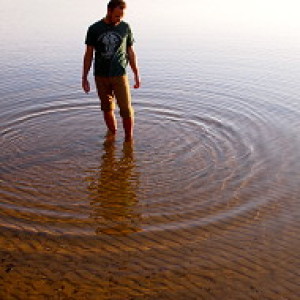Hylaxalus vertebralis
Pare!
Stop the truck, Älejandro says, as we slowed down and parked along the dirt roadside heading through the campo fields to our lower camp. He heard, from the truck mind you, the call of a rare frog as we were driving by. There in the ditch amongst the grasses and muddy water spilling out of a seep are several Hylaxalus vertebralis, otherwise known as the grassland poison frog. This is one of the only populations known anywhere, and they are barely described by science. Right here in this roadside ditch in inner Canar! A rare jewel, like a pearl in a goldfish bowl.
They are called poison frogs not because these are actually toxic but because many of their brethren are in this family further down in the lowland jungles. Hylaxalus, Dendrobates, and more of the poison tribe. We´re here with Alejandro to census and discover, learn and explore, the forests and streams near our camp on the edge of the wilderness of Sangay. This area is so inaccessible there are many frogs, many species barely discovered or described by science. Sometimes new species are even found...sometimes.
In light of us bringing him down Foundacion Cordillera Tropical, the NGO we work closely with, and park guards from the local community that patrol Sangay are here to learn to. While the rest unloaded Seth and I went on a wild goose chase of sorts through Colepato, the nearby Indian community across the river to arrange homestays for the students next week. We met Don Jose, Don Jesus, Don Leonardo, and Don Segundo (as in second) among many other colorful characters. We encountered all sorts of jokes and local campo gossip along the way including word of a bear killing some cattle up one of the nearby valleys recently. As we made the rounds upslope through the spread out field a load of wide eyed, gawk jawed, smiling local kids jumped in the back bed of the truck on the way home from school. Smiling hitchhikers amazed by our presence. It should be nothing but good things for the students and families both. Seth and I are going to do it to, staying up near the top of the hill with Don Segundo and his very prosperous family, think 20 children, horses, and donkeys. Should be interesting.
Back at camp we broke the ice with the local park guards with a circle kick toss of the soccer ball. And it was all smiles as twilight flew into night on the wings of a short eared owl hunting over the meadow gloom. The night begins divided up all of us into three groups to search and sample for frogs: in the pasture, the forest border, and the forest interior. Go slow by headlamp recording as you go picking out little jewels of amphibian amber eyes from the green shadows. Pristimantis bambuscara, picnodermis, canari, mazar and more.
Five species we found that night, I took two back for IDíng in the morning. Carefully placed in bags with water, cooled down under the cover of our cooler right beside the cheese and mote for tomorrows breakfast. A long night and now, finally collapse onto the cushion of the pampas grass under your tent and crawl into your sleeping bag dreaming strange amphibian dreams....
- 0
- 0
- Olympus E-P1
- 1/100
- f/7.1
- 42mm
- 200

Comments
Sign in or get an account to comment.


